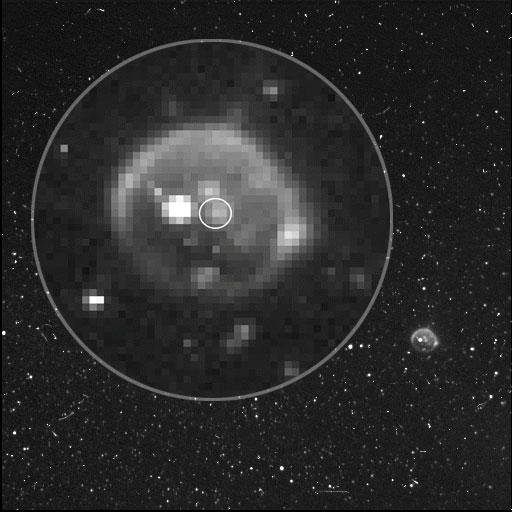
A huge volcanic eruption on Jupiter’s moon Io has been spotted by astronomers.
It was captured by chance by NASA’s probe Juno which is currently orbiting the gas giant.
Although the spacecraft’s mission focuses on Jupiter itself, it can sometimes also observe some of the moons from a distance.
But the latest breakthrough shocked space scientists – who are used to making unusual discoveries.
It happened on December 21 – winter solstice – when four of Juno’s cameras and scanners observed the mysterious moon for over an hour.
They were providing a glimpse of the polar regions during the 17th Jupiter flyby – as evidence of the active eruption unfolded.
Dr Scott Bolton, principal investigator of the Juno mission, said: “We knew we were breaking new ground with a multi-spectral campaign to view Io’s polar region.
“But no one expected we would get so lucky as to see an active volcanic plume shooting material off the moon’s surface.”
Dr Bolton, an associate vice president of Southwest Research Institute’s Space Science and Engineering Division in San Antonio, Texas, added: “This is quite a New Year’s present showing us that Juno has the ability to clearly see plumes.”
It could lead to new insights into Jupiter’s interactions with its five moons. Io’s volcanoes were first revealed by NASA’s Voyager spacecraft in 1979.
A little larger than our own moon, it is thought to harbour less water than any other body in the solar system.
But the volcanic activity is so violent clouds of sulphur and sulphur dioxide are blasted 300 miles into the sky.
The state of the art camera JunoCam acquired three images of Io prior to when it entered eclipse by falling under the gas giant’s shadow.
All showed a volcanic plume half-illuminated with a bright spot seen just beyond the the day-night boundary – a horizon known as ‘the terminator’.
JunoCam leader Dr Candice Hansen-Koharcheck, from the Planetary Science Institute, Tucson, Arizona, explained: “The ground is already in shadow.
“But the height of the plume allows it to reflect sunlight, much like the way mountain tops or clouds on the Earth continue to be lit after the sun has set.”
After Io had passed into darkness of behind Jupiter, sunlight reflecting off the nearby moon Europa helped light it up once more – and the plume.
Others camera called the SRU (Stellar Reference Unit) and the JIRAM (Jovian Infrared Auroral Mapper) – along with the UVS (Ultraviolet Imaging Spectrograph) scanner – caught these sequences.
Dr Heidi Becker, of NASA’s Jet Propulsion Laboratory in la Canada Flintridge, California, said: “As a low-light camera designed to track the stars, the SRU can only observe Io under very dimly lit conditions.
“December 21 gave us a unique opportunity to observe Io’s volcanic activity with the SRU using only Europa’s moonlight as our lightbulb.”
Sensing heat at long wavelengths, the JIRAM instrument detects hotspots in the daylight and at night.
Dr Alberto Adriani, of Italy’s National Institute of Astrophysics, Rome, said: “Though Jupiter’s moons are not JIRAM’s primary objectives, every time we pass close enough to one of them, we take advantage of the opportunity for an observation.
“The instrument is sensitive to infrared wavelengths, which are perfect to study the volcanism of Io. This is one of the best images of Io that JIRAM has been able to collect so far.”
Io’s gravitational interaction with Jupiter drives the moon’s volcanoes, which emit umbrella-like plumes of sulphur and produce extensive basaltic lava fields.
The recent Io images were captured at the halfway point of the mission, which is scheduled to complete a map of Jupiter in July 2021.
Launched in 2011, Juno arrived at Jupiter in 2016. The spacecraft orbits Jupiter every 53 days, studying its auroras, atmosphere and magnetosphere.
By Mark Waghorn